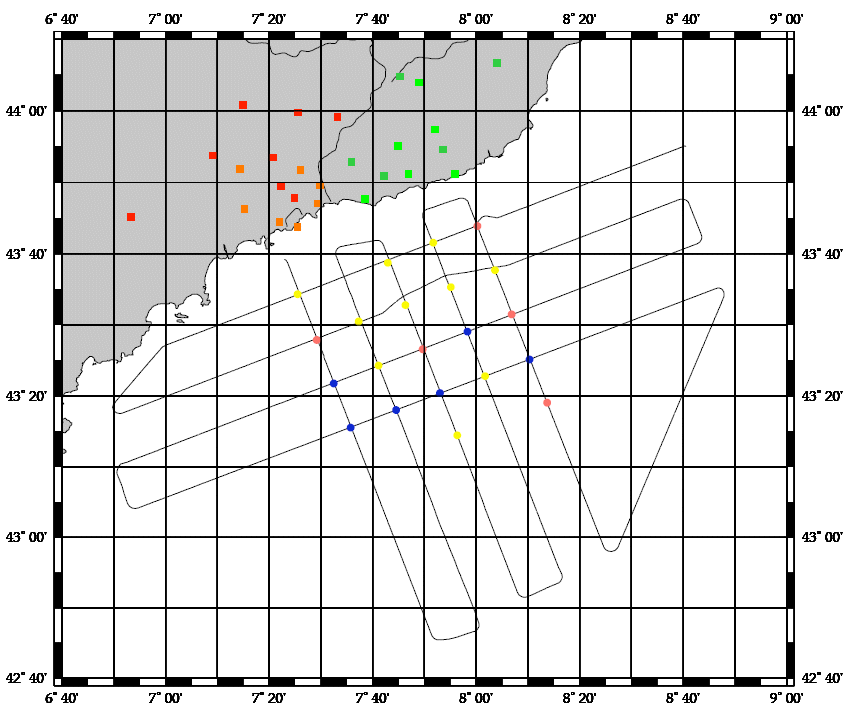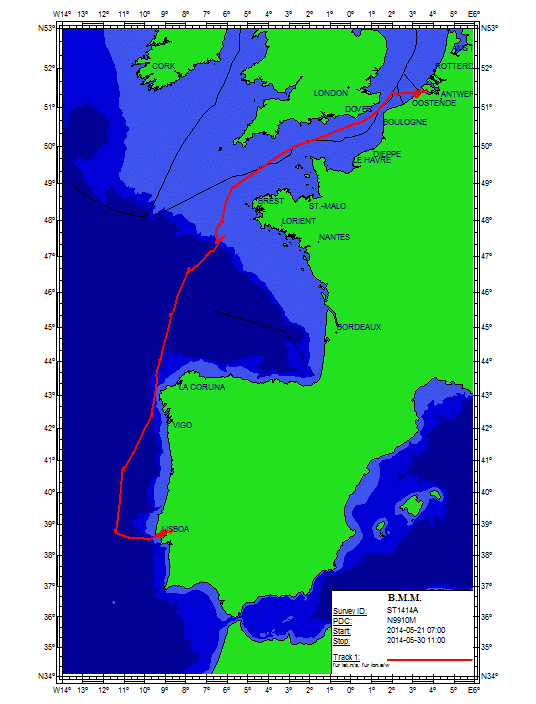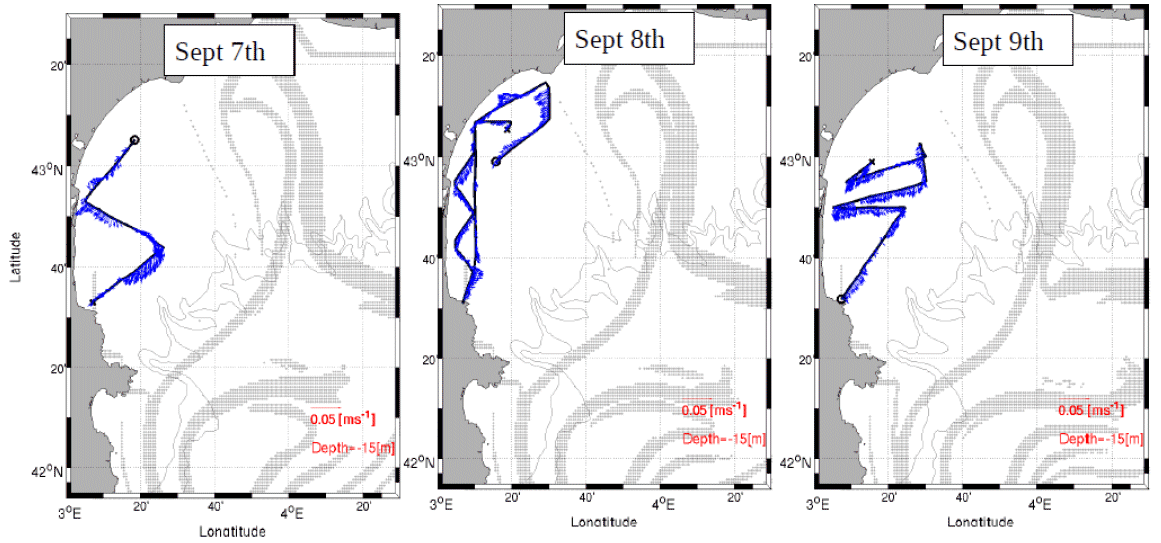Catalog

129 record(s)
Type of resources
Categories
Topics
INSPIRE themes
Keywords
Contact for the resource
Provided by
Years
Formats
Status
-
Hydrography and physical oceanography cruise for the French Navy's hydrographic and oceanographic service (SHOM).
-
The objectives of the BELMER project are: - to validate the MERIS water products for Belgian coastal waters and neighbouring French, UK and Dutch waters - to provide a quantitative statement of product accuracy and recommendations for improvements in the scientific algorithms, where appropriate. In particular the problems reported by the MERIS validation and user communities of turbid water atmospheric correction, case 2 water chlorophyll retrieval, adjacency effects (straylight), moderate sunglint, spatio-temporal variability of specific inherent optical properties and bottom reflectance will be addressed. This project is funded by the "PROgramme for the Development of scientific Experiments" (PRODEX) of the European Space Agency (ESA).
-
<p style="text-align:justify">The main scientific objectives of the cruises are threefold:</p> <ul> <li style="text-align: justify;">to asses the large scale circulation in the Western Basin, evaluating the water masses and the fluxes at different key point in the basin (The North Current, The East and West Corsica currents, the Balearic front, Algerian Basin). The final goal was numerical modelling assessment.</li> <li style="text-align: justify;">to identify and follow peculiar mesoscale structures such as surface eddies, modal weddies, submesoscale coherent vortices (SCV) meanders or filaments and explore the signature on the sea surface height (altimetry) and the acoustic impact (sound propagation).</li> <li style="text-align: justify;">to observe and interpret the submesoscale dynamics such ageostrophic stirring, symmetric instabilities, mixed layer instabilities, subduction and convection.</li> </ul> <p style="text-align:justify">The <strong>Protevs2015_leg1 </strong>campaign took place from the 8th to 28th of January 2015 on board of the RV <em>Pourquoi Pas?</em> in the north western mediterranean basin. It is focused on physical aspects (hydrology and dynamics). The main objective was the dynamics of the North current from its roots in the Ligurian Sea downstream to the Gulf of Lion. The surveys try to catch not only the meso-scale features but also the submesoscale associated to the the northern current or at least in its vicinity.</p> <p style="text-align:justify"> </p> <p style="text-align:justify"> </p>
-

<p style="margin-left:0cm; margin-right:0cm">This multidisciplinary and integrated study comprises geophysical, sedimentological and (bio)geochemical data and aims to present a holistic view on the interaction of both environmental and geological drivers in cold-water coral mound development in the Gulf of Cadiz. In this context, it was fundamental to obtain "samples from the deep" to explore and characterize the biodiversity thought (1) geophysical and video imaging, (2) targeted microbiological profiling, (3) evaluation of present and past oceanic conditions.</p> <p style="margin-left:0cm; margin-right:0cm">Targeted microbiological and biogeochemical transects with long sediment cores were proposed to elicit the 3D spatial architecture and diversity of the microbial mound community and its possible role in slope stabilization. Off-mound cores were also targeted in order to evaluate present and past oceanic conditions by dating of the cored sequences and by reconstruction of water mass and sedimentary dynamics variability for eliciting the time frame of natural biodiversity changes.</p> <p style="margin-left:0cm; margin-right:0cm">The key objective aiming to investigate the microbial diversity and the functional link microbes-metazoans was addressed through biogeochemical approaches (biomarkers), molecular fingerprinting (DGGE, 16S rRNA), fluorescence in situ hybridization (FISH) and laboratory culture. This also includes the analysis of microbial infestation of coral frame builders and fauna-microbe interactions, in general, and the analysis of microbially mediated processes of carbonate precipitation, at various sites and scales: coral mucus, carbonate crusts, mound slopes, mound interior.</p> <p style="margin-left:0cm; margin-right:0cm">The sites targeting was mainly prepared by geophysical surveying (high-resolution sparker seismics, multibeam bathymetry) and ROV imagery, performed by RCMG (Ghent University). Especially the location of all on-mound core sites was determined from interpretation of the ROV Genesis dives during the CADIPOR III campaign of June 2007 on board of R/V Belgica. Additional information was made available through cooperation within past or ongoing European projects such as ESF EuroMARGINS "Moundforce", EC FP5 RTN "EURODOM" and EC FP6 IP "HERMES". Although the MiCROSYSTEMS-MD169 cruise focus was on the Pen Duick Escarpment (PDE), (8 sites, Figures 1 and 2) also other sites such as Conger Cliff (Vernadsky Ridge) and Mercator Mud Volcano were sampled. Special attention was given to the two proposed drill sites for IODP Full proposal 673 "Atlantic Mound Drilling 2: Morocco Margin". A total of five main site locations were identified:<br> 1)The Pen Duick Mounds: Alpha, Beta, Gamma and Epsilon Mounds,<br> 2) The Vernadsky Ridge mounds: Conger Cliff,<br> 3) A depression site at the foot of PDE,<br> 4) Palaeoceanographic reference sites,<br> 5) Mercator Mud Volcano.</p> <p style="margin-left:0cm; margin-right:0cm; text-align:center"><img alt="" src="https://campagnes.flotteoceanographique.fr/campagnes/8200100/images/426.png" style="height:244px; width:500px"></p> <p style="margin-left:0cm; margin-right:0cm"><em>Figure 1: Shipboard map of the SF11 multibeam bathymetry with site tracks.</em></p> <p style="margin-left:0cm; margin-right:0cm">The coring and subsampling strategies used during this campaign were predominantly site-dependent, distinguishing between "on-mound" and "off-mound" sites. Every on-mound site was cored at least two times; one core for geochemistry and microbiology, to be sampled immediately on board, and a second core for sedimentology, palaeoceanography and chronostratigraphy, to be left unopened and stored immediately.
-

Assessment of small pelagic species resources in the Gulf of Lion using echo-integration and trawl hauls to identify the observed echoes. This falls under the SIDEPECHE project.
-
Characterizing the variability of hydrology and currentology features and particulate fluxes in the two canyons of Planier (station PL1000) and Lacaze-Duthiers (station LD1000), located at the eastern and western edges of the Gulf of Lion.
-

The research programme of Belgica campaign 2014/14 aimed at assessing the different biogeochemical processes controlling the carbon and nitrogen cycles in oligotrophic N.E. Atlantic waters. These cycles are essential components of the biological Carbon Pump' by which part of atmospheric carbon dioxide is transferred to the ocean's interior. Our approach is based on the use of dual nitrate isotope measurements (natural abundance and enrichment experiments) to disentangle these various nitrogen processes in the marine environment, and in particular the process of diazotrophy by which atmospheric N2 is introduced into the oceanic fixed nitrogen reservoir. This input of new' nitrogen should stand in balance with the denitrification process by which nitrogen is lost from the oceanic system. There are indications that the intensity as well as the geographical distribution of diazotrophic activity has been underestimated till date, in general. It is of particular interest to better document diazotrophic activity at latitudes of 38°N and northward, areas for which only few data are available. During the cruise we studied the different biogeochemical processes acting on the marine N-cycle, including N2 fixation, nitrate (NO3-), ammonium (NH4+) and nitrite (NO2-) uptake, nitrification, along a north-south section through the Gulf of Biscaye to Cape Finisterre and further south in open ocean waters along the Iberian peninsula till about 38°30'N. In addition, the effect of iron limitation on the nitrogen fixation and the nitrification processes was investigated.
-

Understanding the role played by the combined physical-biogeochemical dynamics at (sub)-mesoscales in exchanges of matter and energy between coastal and open sea areas. The LATEX strategy is based on selective and combined use of numerical modelling and in situ observations (Lagrangian floats, SF6, shipboard ADCPs, ADCP moorings, satellite images, gliders and coastal radars). The main objective of LATEX is to study the impact of an eddy structure at (sub)mesoscale, which is chronically present in the western part of the Gulf of Lion, in interaction with the North Mediterranean current(NMC)on trends in the distribution of conservative tracers and biogeochemical properties. Thanks to this strategy, LATEX should provide answers to the following questions: - Is this type of structure likely to significantly affect the horizontal transfer of matter between the continental shelf and the NMC? - What are the consequences for biogeochemical cycles of the structure's interaction with the NMC? - How do CO2 concentrations evolve within the eddy throughout its life cycle? - How does this type of (sub)-mesoscale coastal eddy act in structuring of plankton communities and the variability in primary production observed in the study zone? - Are the amounts of matter transferred by (sub)-mesoscale structures significant with respect to that displaced by the general circulation on seasonal and annual scales? The related project is called LATEX (LAgrangian Transport Experiment).
-
The main objective of the MOOSE-GE cruises is to observe the annual evolution of the Northwestern Mediterranean Sea in the context of the climate change and anthropogenic pressure in order to be able to detect and identify long-term environmental trend and anomalies of the marine ecosystem. The annual cruise focuses on moorings maintenance and hydrology, biogeochemistry and biology monitoring of the Northwestern Mediterranean basin. It aims to follow variability of water masses properties (LIW and WMDW) and biogeochemical and biological content related to these water masses.
-
Hydrography and physical oceanography cruise for the French Navy's hydrographic and oceanographic service (SHOM).
 Catálogo de datos del IEO
Catálogo de datos del IEO